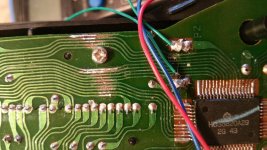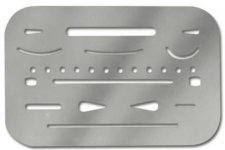falter
Veteran Member
Not sure if these qualify as 'computers' per se.. but anyway, I have one of these Coleco Pacman table top units and have nursed it mostly back to health. However, during disassembly, because I didn't know of some hidden screws the board got bent and developed a hairline crack right through many traces. If I flex the board in just the right way everything lights up.
I'm looking for advice on best repair option. What I've tried doing with some success is sanding away the coating over the affected traces and then doing a tiny solder bridge. But it is tedious and because the traces are so small and packed so tight its hard to avoid crossing them.
I was thinking circuit trace pen.. but don't know if these are fine enough. Another way would be to run jumper wires.. but because these traces are so small and so tightly packed my eyes have a hard time following them from point to point. Anyway.. just looking for any advice from more seasoned pcb repair guys.

I'm looking for advice on best repair option. What I've tried doing with some success is sanding away the coating over the affected traces and then doing a tiny solder bridge. But it is tedious and because the traces are so small and packed so tight its hard to avoid crossing them.
I was thinking circuit trace pen.. but don't know if these are fine enough. Another way would be to run jumper wires.. but because these traces are so small and so tightly packed my eyes have a hard time following them from point to point. Anyway.. just looking for any advice from more seasoned pcb repair guys.


